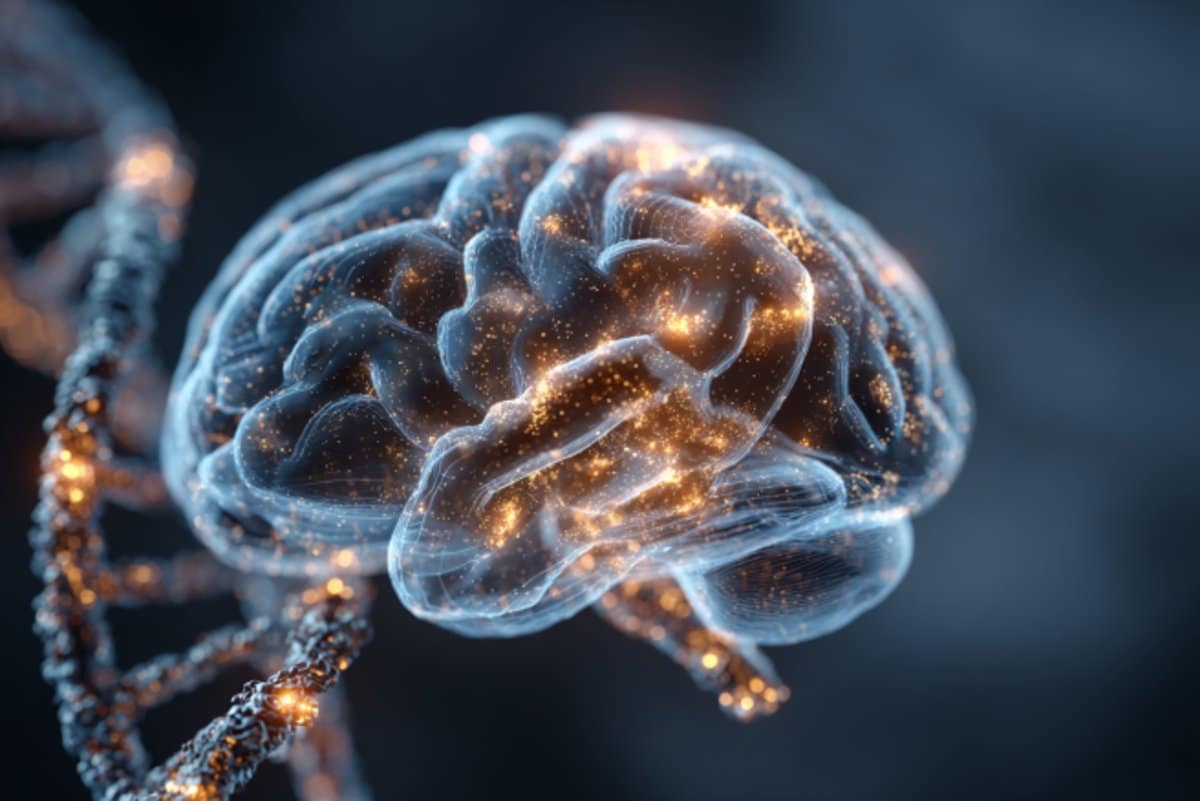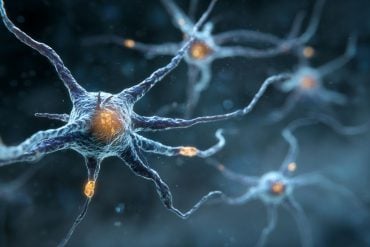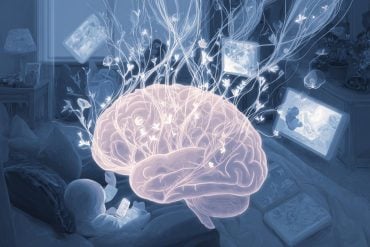Summary: Researchers have identified two genes from the human genome’s “dark matter” that influence brain size and synaptic signaling. Using the complete human genome and zebrafish models, the team showed how these duplicated genes may contribute to what makes the human brain distinctive.
The findings also provide a roadmap to study hundreds more genes that could shed light on brain evolution, language disorders, and autism. This work opens new avenues for understanding the genetic foundations of human cognition.
Key Facts:
- Dark Matter Genes: Duplicated genes in hard-to-sequence DNA regions shape brain traits.
- New Discoveries: GPR89B and FRMPD2B linked to brain size and synaptic signaling.
- Broader Impact: Insights may aid research into language deficits and autism.
Source: UC Davis
What makes the human brain distinctive?
A new study published July 21 in Cell identifies two genes linked to human brain features and provides a road map to discover many more.
The research could lead to insights into the functioning and evolution of the human brain, as well as the roots of language disorders and autism.

The newly characterized genes are found among the “dark matter” of the human genome: regions of DNA that contain a lot of duplicated or repeat sequences, making them difficult to study until recently.
If assembling a DNA sequence is like putting together a book from torn-up pages, reconstructing it from repeat sequences would be like trying to match pages using only words like “and” and “the.” There are many opportunities for mismatches and overlap.
Although difficult to study, DNA repeats are also thought to be important for evolution as they can generate new versions of existing genes for selection to act on.
“Historically, this has been a very challenging problem. People don’t know where to start,” said senior author Megan Dennis, associate director of genomics at the UC Davis Genome Center and associate professor in the Department of Biochemistry and Molecular Medicine and MIND Institute at the University of California, Davis.
In 2022, Dennis was a coauthor on a paper describing the first sequence of a complete human genome, known as the ‘telomere to telomere’ reference genome. This referencencludes the difficult regions that had been left out of the first draft published in 2001 and is now being used to make new discoveries.
Identifying human brain genes
Dennis and colleagues used the telomere-to-telomere human genome to identify duplicated genes. Then, they sorted those for genes that are: expressed in the brain; found in all humans, based on sequences from the 1000 Genomes Project; and conserved, meaning that they did not show much variation among individuals.
They came out with about 250 candidate gene families. Of these, they picked some for further study in an animal model, the zebrafish. By both deleting genes and introducing human-duplicated genes into zebrafish, they showed that at least two of these genes might contribute to features of the human brain: one called GPR89B led to slightly bigger brain size, and another, FRMPD2B, led to altered synapse signaling.
“It’s pretty cool to think that you can use fish to test a human brain trait,” Dennis said.
The dataset in the Cell paper is intended to be a resource for the scientific community, Dennis said. It should make it easier to screen duplicated regions for mutations, for example related to language deficits or autism, that have been missed in previous genome-wide screening.
“It opens up new areas,” Dennis said.
Additional coauthors on the work are: Daniela Soto, José Uribe-Salazar, Gulhan Kaya, Ricardo Valdarrago, Aarthi Sekar, Nicholas Haghani, Keiko Hino, Gabriana La, Natasha Ann Mariano, Cole Ingamells, Aidan Baraban, Zoeb Jamal, Sergi Simó and Gerald Quon, all at UC Davis; Tychele Turner, Washington University St. Louis; Eric Green, National Human Genome Research Institute, Bethesda, Md.; and Aida Andrés, University College, London.
Funding: The work was supported in part by grants from the National Institutes of Health, National Science Foundation and The Wellcome Trust.
About this genetics and neuroscience research news
Author: Andrew Fell
Source: UC Davis
Contact: Andrew Fell – UC Davis
Image: The image is credited to Neuroscience News
Original Research: Open access.
“Human-specific gene expansions contribute to brain evolution” by Megan Dennis et al. Cell
Abstract
Human-specific gene expansions contribute to brain evolution
Duplicated genes expanded in the human lineage likely contributed to brain evolution, yet challenges exist in their discovery due to sequence-assembly errors.
We used a complete telomere-to-telomere genome sequence to identify 213 human-specific gene families.
From these, 362 paralogs were found in all modern human genomes tested and brain transcriptomes, making them top candidates contributing to human-universal brain features.
Choosing a subset of paralogs, long-read DNA sequencing of hundreds of modern humans revealed previously hidden signatures of selection, including for T cell marker CD8B.
To understand roles in brain development, we generated zebrafish CRISPR “knockout” models of nine orthologs and introduced mRNA-encoding paralogs, effectively “humanizing” larvae.
Our findings implicate two genes in possibly contributing to hallmark features of the human brain: GPR89B in dosage-mediated brain expansion and FRMPD2B in altered synapse signaling.
Our holistic approach provides insights and a comprehensive resource for studying gene expansion drivers of human brain evolution.







